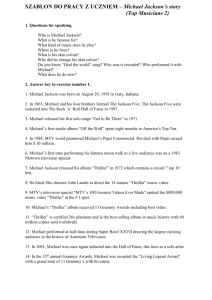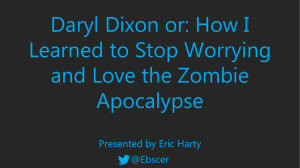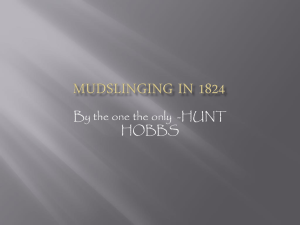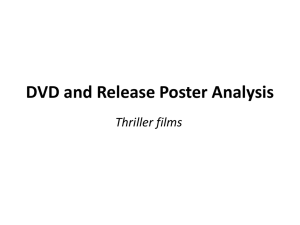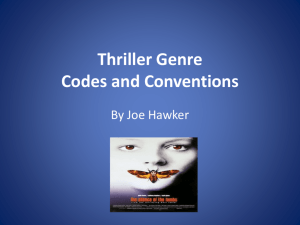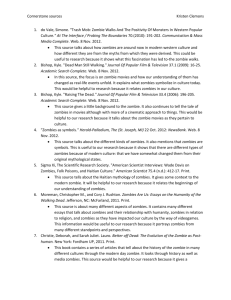Here - Blogs@Baruch
advertisement
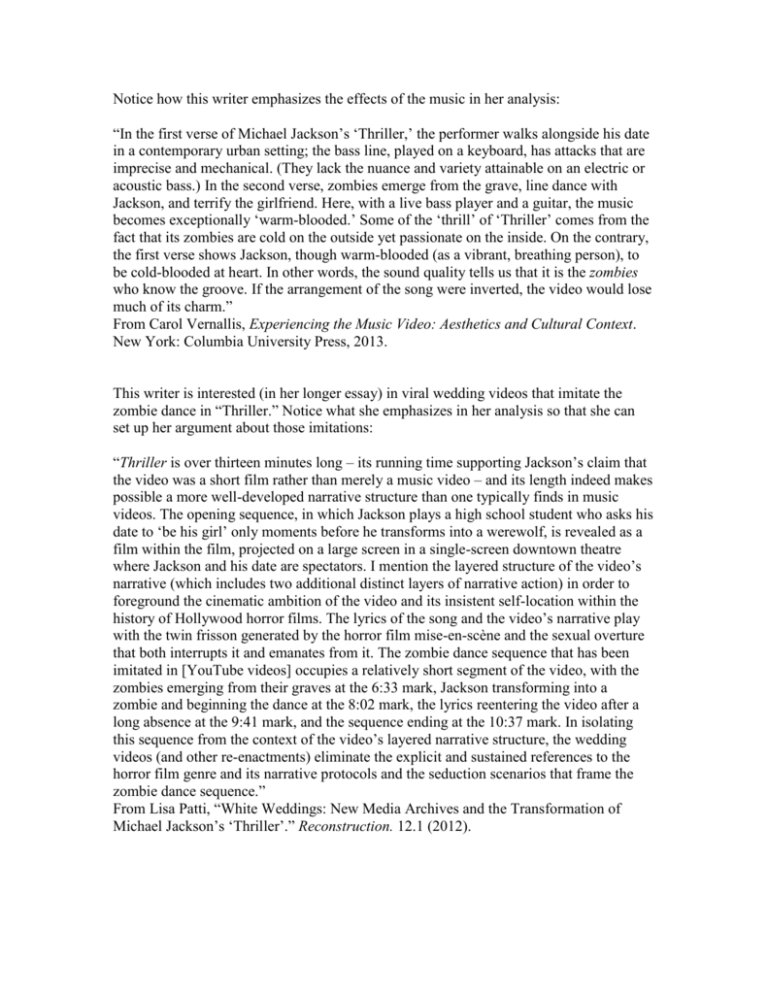
Notice how this writer emphasizes the effects of the music in her analysis: “In the first verse of Michael Jackson’s ‘Thriller,’ the performer walks alongside his date in a contemporary urban setting; the bass line, played on a keyboard, has attacks that are imprecise and mechanical. (They lack the nuance and variety attainable on an electric or acoustic bass.) In the second verse, zombies emerge from the grave, line dance with Jackson, and terrify the girlfriend. Here, with a live bass player and a guitar, the music becomes exceptionally ‘warm-blooded.’ Some of the ‘thrill’ of ‘Thriller’ comes from the fact that its zombies are cold on the outside yet passionate on the inside. On the contrary, the first verse shows Jackson, though warm-blooded (as a vibrant, breathing person), to be cold-blooded at heart. In other words, the sound quality tells us that it is the zombies who know the groove. If the arrangement of the song were inverted, the video would lose much of its charm.” From Carol Vernallis, Experiencing the Music Video: Aesthetics and Cultural Context. New York: Columbia University Press, 2013. This writer is interested (in her longer essay) in viral wedding videos that imitate the zombie dance in “Thriller.” Notice what she emphasizes in her analysis so that she can set up her argument about those imitations: “Thriller is over thirteen minutes long – its running time supporting Jackson’s claim that the video was a short film rather than merely a music video – and its length indeed makes possible a more well-developed narrative structure than one typically finds in music videos. The opening sequence, in which Jackson plays a high school student who asks his date to ‘be his girl’ only moments before he transforms into a werewolf, is revealed as a film within the film, projected on a large screen in a single-screen downtown theatre where Jackson and his date are spectators. I mention the layered structure of the video’s narrative (which includes two additional distinct layers of narrative action) in order to foreground the cinematic ambition of the video and its insistent self-location within the history of Hollywood horror films. The lyrics of the song and the video’s narrative play with the twin frisson generated by the horror film mise-en-scène and the sexual overture that both interrupts it and emanates from it. The zombie dance sequence that has been imitated in [YouTube videos] occupies a relatively short segment of the video, with the zombies emerging from their graves at the 6:33 mark, Jackson transforming into a zombie and beginning the dance at the 8:02 mark, the lyrics reentering the video after a long absence at the 9:41 mark, and the sequence ending at the 10:37 mark. In isolating this sequence from the context of the video’s layered narrative structure, the wedding videos (and other re-enactments) eliminate the explicit and sustained references to the horror film genre and its narrative protocols and the seduction scenarios that frame the zombie dance sequence.” From Lisa Patti, “White Weddings: New Media Archives and the Transformation of Michael Jackson’s ‘Thriller’.” Reconstruction. 12.1 (2012).

